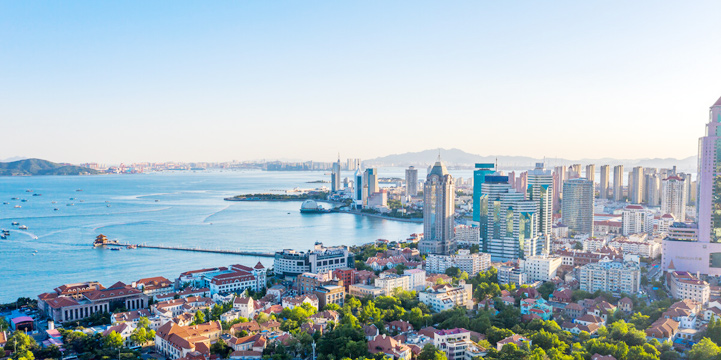
After two years of development, the northeastern region of Brazil is poised to surpass the southern region of the country, reclaiming its position as Brazil's second-largest consumer market. According to a survey released by the market research firm IPC Maps, it is estimated that by 2025, total household consumption in the northeastern region of Brazil will reach around 1.52 trillion Brazilian Reais, accounting for 18.59% of the national consumption total. In comparison, the consumption share of the southern region, consisting of Rio Grande do Sul, Santa Catarina, and Paraná states, is projected to be 18.51%. Last year, the consumption total in the northeastern region of Brazil accounted for 18.06%, while the southern region stood at 18.57%.
The total national household consumption in Brazil is expected to increase to 8.151 trillion Brazilian Reais, representing a 3.01% year-on-year growth. The shift in rankings between the northeastern and southern regions is influenced by multiple factors. Rio Grande do Sul in the south faced severe flooding last year, impacting its economy; meanwhile, the northeastern states have benefited from various policy measures such as the "Family Allowance" program, raising the minimum wage standards, and significant investments in renewable energy. Additionally, the tourism industry, serving as a vital economic engine in the region, has significantly driven the growth of local commercial activities.
According to Marcos Pazzini, a partner at IPC Marketing, the northeastern region once regained its position as Brazil's second-largest consumer market in 2008, only to lose it again during the COVID-19 pandemic. He stated, "With the floods in the south, the normalization of the tourism industry, and the devaluation of the real, the northeastern region is rising again, reclaiming its position as the country's second-largest household consumption market."
The devaluation of the Brazilian real against the US dollar has made international travel more expensive but has also increased the attractiveness of local tourism to foreign visitors. According to data from the Brazilian Ministry of Tourism, the northeastern region welcomed 159,149 international tourists at airports during the first four months of 2023, significantly higher than the 105,358 visitors during the same period in 2022.
Michelle Silva, a council member of the Brazilian Association of Travel Agencies (Abav), noted that the tourism industry in the northeast offers a diverse range of options, including ecotourism, cultural tourism, and beach tourism. She expects the momentum in tourism growth to continue this year. According to the latest annual report from the Brazilian Tour Operators Association (Braztoa), the tourism revenue in the northeastern region was 4.56 billion Brazilian Reais in 2023, accounting for 39.6% of the national total. The association also pointed out that the tourism industry is a significant economic pillar in many state capitals in the Brazilian Northeast, serving as a primary source of income and employment.
The job market in the northeastern region is also improving. In 2024, the average unemployment rate in the region decreased from 11.2% in 2013 to 9.4%, marking the lowest level since 2014; during the same period, labor income increased by 10.3%, higher than the national average wage growth of 7.6%.
The development of the tourism industry is just one of the many driving factors for the economic recovery in the Northeast. With a population of approximately 55 million, the region has also benefited mainly from the increase in minimum wage standards and the recovery of the job market. According to Flávio Ataliba, coordinator of the Northeast Development Research Center under the FGV/Ibre, even slight changes in per capita income in the Northeast can have a significant impact due to the region's large population base.
Looking ahead to 2025, the economic growth rate in the northeastern region of Brazil is expected to surpass the national average. According to forecasts from the consultancy firm Tendências, the Northeast region is projected to grow by 2.2%, compared to the national GDP growth forecast of 1.9%. Camila Saito, a partner and economist at Tendências, stated, "The Northeast region continues to maintain a certain level of consumption and employment heat. While the growth rate may slow down, it is expected to outperform the national average."
Tendências predicts that from 2027 to 2034, the Northeast will lead national economic growth. The region's average annual GDP growth rate is expected to reach 3.2%, compared to the national average of 2.3%. Industries driving this long-term growth include natural gas and oil extraction, wind energy investments, and Brazil's new Growth Acceleration Plan (PAC). According to Abeeólica, the Brazilian Wind Energy Association, as of 2024, out of 76 wind farms in Brazil, 73 are located in the Northeast region, with annual investments exceeding 10 billion Brazilian Reais and cumulative investments reaching 42 billion USD from 2015 to 2024. The impact of energy investments is significant, with each real invested yielding a return of 2.9 reais to GDP. This effect is even more profound in the Northeast region, where several cities have seen a significant improvement in the Human Development Index (HDI). Solar energy projects have also received investments worth billions of Reais in recent years, continuing to drive revenue and economic development in the region. This trend is expected to continue, painting a bright future for the economy of the Northeast region.
